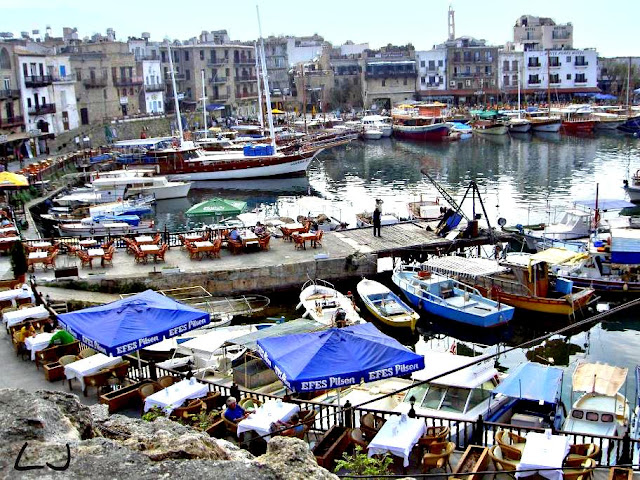At The Nicosia Archaeological Museum
Spring has arrived in Cyprus not in full swing but with a financial market nightmare, instead! The island's rich historical and archaeological past as a cultural crossroad had turned it into a major tourist destination.
Kyrenia, with its pictureques harbour and adjacent castle is called the Jewel of North Cyprus
The Republic of Cyprus, the lion’s share of the island, joined the EU in 2007, while its Northern region under the helm of Turkish Cypriots, had remained faithful to the Turkish Lira.
The economic boom was a reality, though the reunification could not be achieved.
The Old City Walls date from the Venetian occupation in the 16th century and thus they are called Venetian Walls. They are located in Nicosia.
At Limassol (2nd largest city)
Paphos - the mythical birhplace of Aphrodite - and its Castle, originally a Byzantine fortress erected to protect the harbour, was rebuilt by the Lusignans in the 13th century, dismantled by the Venetians in 1570 during the Ottoman invasion and rebuilt by the Ottomans after they captured the island in the 16th century. During its long history, it has seen use as a fortress, a prison and even a warehouse for salt under British colonial rule. A landmark symbol of the Paphos region, it was declared an ancient monument in 1935. The Castle acts as a dramatic backdrop for cultural events staged in the square in front. These include the Paphos Aphrodite Festival which each September presents international opera with world famous artists.
The sea around Cyprus is always calm and there are plenty of safe swimming areas, like the one you see below - the Aphrodite resort.
LEFKARA is a very interesting village on the island


LARNACA -The 3rd largest city on the island
The Hala
Sultan Tekke is the grave of Umm Haram who was the wife of Ouvadas Ibn who led
the invasion on the island of Larnaca in 649 B.C. Overlooking the Salt Lake,
the Hala Sultan Tekke is built on the place where she died. The simple grave
has now been transformed into a beautiful mosque. An extremely sacred shrine, it is
visited by thousands of pilgrims every year.
Real estate business brought great opportunities of development with the consequent rise in the living standards of the population. Formerly, a country of emigrants, Cyprus was for many years a burgeoning destination for Europeans from poor countries who settled over there in search of better living conditions. In stark contrast, wealthy aged people from EU had chosen it for a pleasant daily life with a mild climate.
The outbreak of the recent crisis has put at risk all the hopes and dreams… once again, a Southern European country falls in disgrace… will its people be strong enough to keep enduring the trauma of these days? How longer can they bear such a situation???
~~ May you have an Easter time filled with many blessings ~~














































